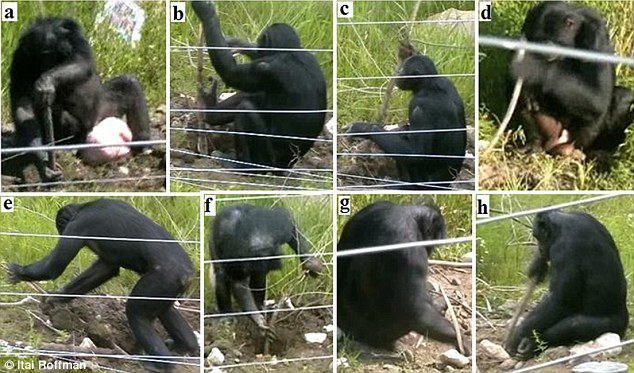
The great apes, which are cousins of chimpanzees, have been seen creating and using tools much like our early human ancestors.
Researchers have reported witnessing bonobos modifying branches to create spears and using antlers and rocks as daggers, scrapers, shovels and hammers.
They claim their skills with these tools resembles the techniques attributed to the Oldowan stone tool culture that appeared in ancient humans living between 2.6 million and 1.7 million years ago.
They say studying the bonobos could help anthropologists unravel how early humans first began to use tools and refined their techniques.
It may even mean that tool use in primates may be even older than we thought reaching back perhaps five million years to the common ancestor of chimps, bonobos and humans.
Itai Roffman, a research fellow at the International Graduate Centre of Evolution at Haifa University in Israel who led the study, said: 'The bonobos used modified branches and unmodified antlers or stones to dig under rocks and in the ground or to break bones to retrieve the food.
'Antlers, short sticks, long sticks, and rocks were effectively used as mattocks, daggers, levers, and shovels, respectively.
'One bonobo successively struck a long bone with an angular hammer stone, completely bisecting it longitudinally.
'Another bonobo modified long branches into spears and used them as attack weapons and barriers.
'The bonobos' foraging techniques resembled some of those attributed to Oldowan hominins, implying that they can serve as referential models.'
The researchers, whose work is published in the American Journal of Physical Anthropology, studied bonobos in a zoo in Germany and a sanctuary in Iowa, giving them a series of problems that required tools to solve such as burying food under rocks.
They then left a tray of potential tools such as sticks, antlers and stones nearby.
Two of the eight zoo animals made use of the tools and four of seven in the sanctuary. They used antlers, sticks and rocks to dig and longer sticks to lever rocks out of the way.
The researchers say in some cases the bonobos used different tools in sequence, rather like a tool kit, to access the food.
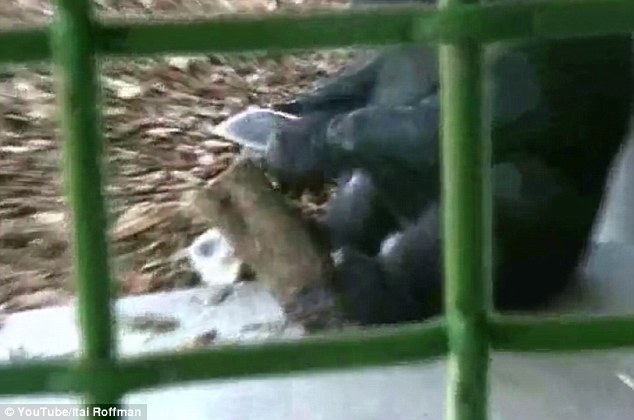
One female bonobo sharpened a stick with her teeth to create a spear-like weapon that she then jabbed at the researchers.
Similar tool use has been seen in the wild from chimpanzees, who use sticks to hunt for bush babies.
In a previous study, Mr Roffman also recorded a male bonobo called Kanzi fashioning sharp stone tools from larger rocks and then using them to chop and scrap at wood.
This was thought to be a rare example from a particularly clever bonobo - Kanzi had also been taught sign language and had spent most of his life in the presence of humans.
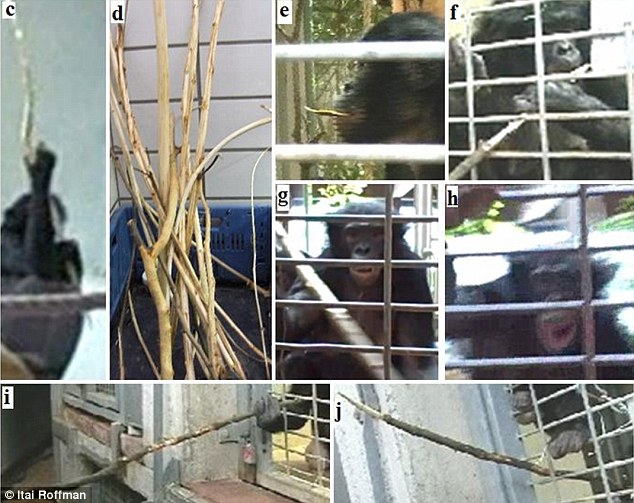
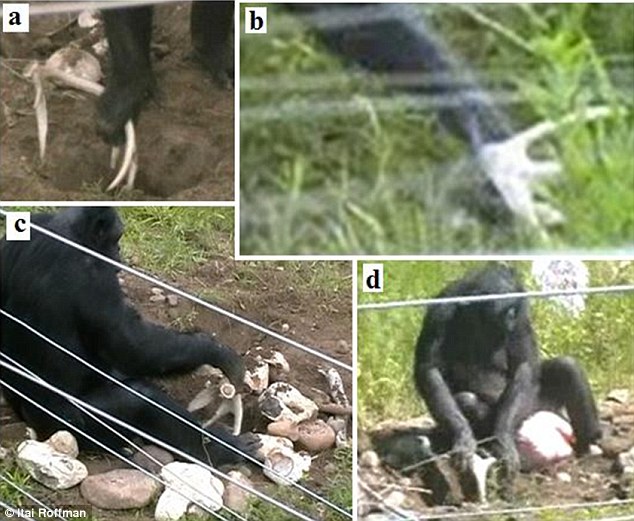
Although tool use is yet to be seen in the wild, it is thought the shy animals may use tools in similar ways to help them solve problems.
Mr Roffman added: 'Bonobos in the sanctuary, unlike those in the zoo, used tool sets to perform sequential actions.
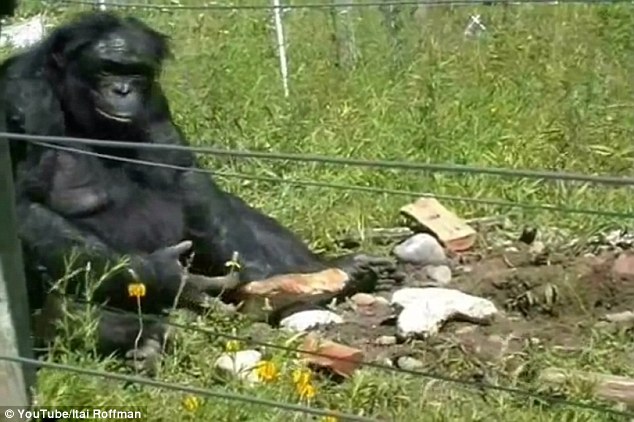
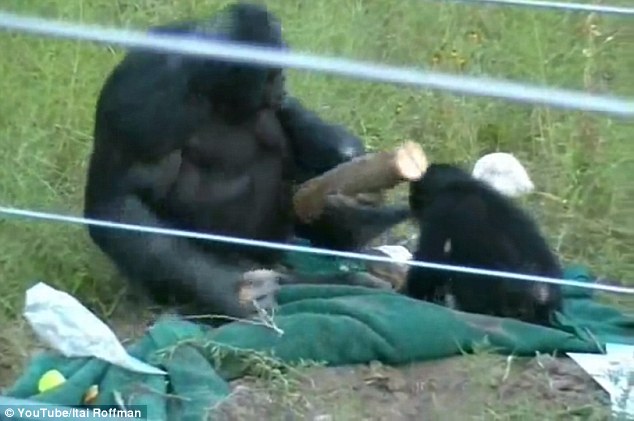
She added that tool use may be more common among bonobos in the southern part of their range, which have been poorly studied, as food is harder to obtain there.
However, according to New Scientist, some researchers believe wild bonobos may not have as much time to experiment compared to their captive relatives.
Francesco d'Errico, an anthropologist at the University of Bordeaux in France, said the actions of captive animals bear little resemblance to what happens in the wild, but it does show the potential for tool use is there.
ANIMALS THAT USE TOOLS
Chimpanzees have emerged as sophisticated tool users, from cracking nuts with stones, fishing for termites with sticks and using moss to make sponges. In 2007 researchers also saw wild chimps in Senegal faishing sticks into spears to help them drive bushbabies out of hollow trees.
There are few reports of gorillas using tools in the wild but they have been seen using branches as walking sticks to test the submerged ground in front of them. However, earlier this year a female gorilla in Rwanda was seen to use a stick to extract ants from their nest and lick them off to avoid being bitten. It is the first example of tool use in the apes in the wild.
Capuchin monkeys are the first non-ape primate for which tool use was documented in the wild. They were seen cracking nuts with hammers and anvils and using sticks to dig up plants. In some cases they have also used sticks to drive prey out from inside rock crevices.
Sea otters are one of the few non-primates to regularly use tools. The creatures float on their backs and use stones to crack open shellfish placed on their chests.
Crows have been shown to have remarkable intelligence and have been witnessed using sticks to 'fish' for insects and larvae hidden inside tree bark. In captivity crows have also been shown to create other tools from pieces of wire.
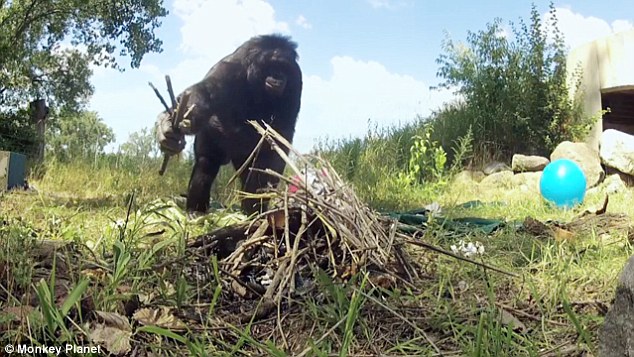



Reader Comments
to our Newsletter